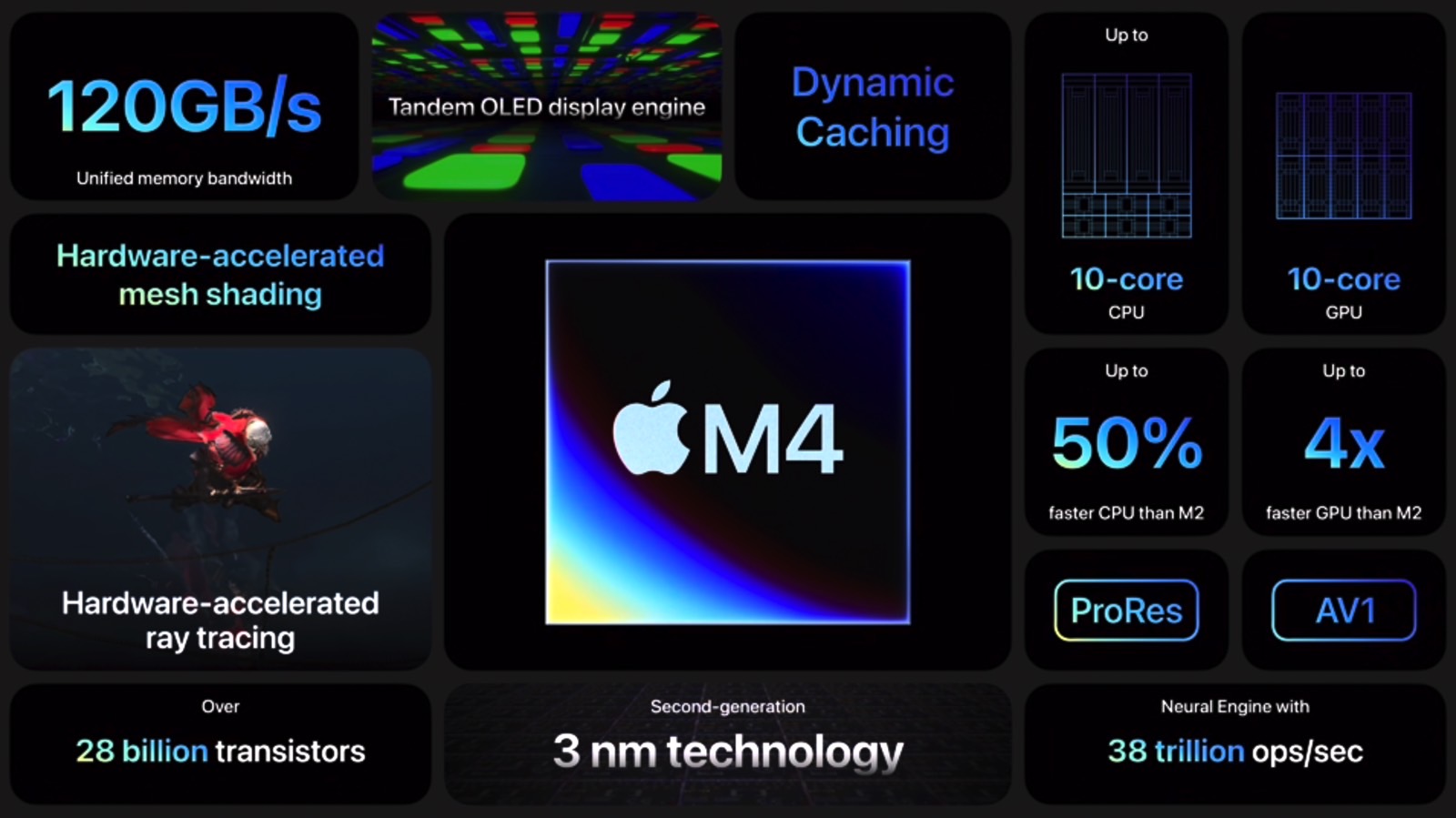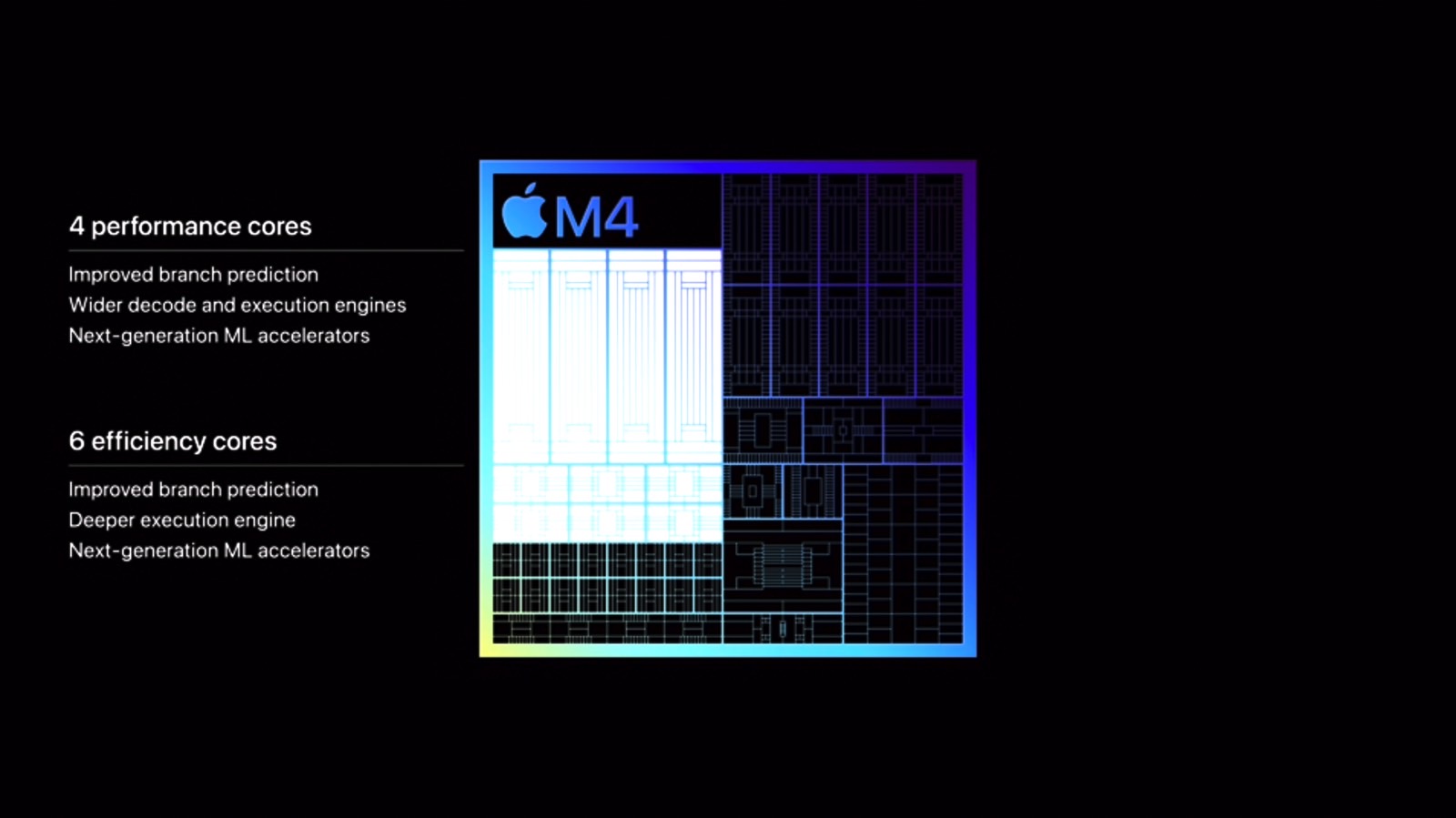PSA: Cheaper OLED iPad Pro Comes With A Cheaper Version Of The M4 Chip
Less than a year after introducing the M3 chip that powers the MacBook Pro and MacBook Air, Apple unveiled the M4 chip on Tuesday. Thus, Apple confirmed last-minute rumors about the OLED iPad Pro that said Apple might skip the M3 generation for this iPad upgrade.
The arrival of the new System-on-Chip (SoC) shouldn't be surprising, considering what's about to happen. Apple will hold its annual WWDC keynote next month, where AI will be the main topic, regardless of operating system. By giving the iPad Pro the M4 chip, Apple has ensured the tablets are ready for the generative AI features coming via iPadOS 18 this fall.
While Apple didn't detail any of those genAI features during the iPad event on Monday, it ensured everyone watching the stream got the picture. AI is one of the M4's fortes. The SoC will be ready for what's coming in iPadOS 18 and future versions.
It's not just about AI. The M4 is faster than its predecessors, both in CPU and GPU processing. It also has a new display engine that powers the iPad's Tandem OLED screen. Finally, the M4 is more efficient than previous-gen chips.

However, if you're buying the new iPad Pro for workloads that require the best possible performance, you should know that Apple has two different M4 chips powering the iPad Pro models. You'll have to spend more money to get the best M4 variant Apple can offer today.
Apple hinted as much during the Let Loose event when it detailed the M4 specs. The "up to four performance cores" detail indicated that not all iPad Pro models will feature CPUs with four performance cores. But all the CPUs will have six efficiency cores.
Therefore, not all M4 iPad Pro models pack 10-core CPUs. Apple's press release and product pages confirm that. The M4 comes in two CPU versions, including 9-core and 10-core versions. The latter only powers the more expensive tablets.
That's not the only difference. The 10-core versions also feature 16GB of RAM, double of what's available for the 9-core models.

To recap, the 256GB and 512GB OLED iPad Pro variants feature M4 chips with a 9-core CPU (3 performance cores and 6 efficiency cores), 10-core GPU, 16-core Neural Enginelm and 8GB of RAM (120GB/s memory bandwidth).
The 1TB and 2TB OLED iPad Pros have the M4 chip that Apple mostly talked about on stage. You get a 10-core CPU (4 performance cores and 6 efficiency cores), 10-core GPU, 16-core Neural Enginelm, and 16GB of RAM (120GB/s memory bandwidth).
The only differences are an extra CPU core and double the RAM for the 1TB and 2TB models.
That said, in real-life scenarios, you'll probably be unable to tell the difference between a 9-core CPU and a 10-core version. Even the memory difference should not affect you.
I'm waiting for iPadOS 18 to arrive before I decide if I want to buy an M4 iPad Pro. But if I'm getting one, I'll go for the 9-core M4 variant without skipping a beat. The upgrade I actually want concerns the display. The nano-texture glass Apple made for the M4 iPad Pro is exclusive to the 1TB and 2TB variants.
You can order the new iPad Pro from Apple right now. The tablet will start shipping on May 15th.
